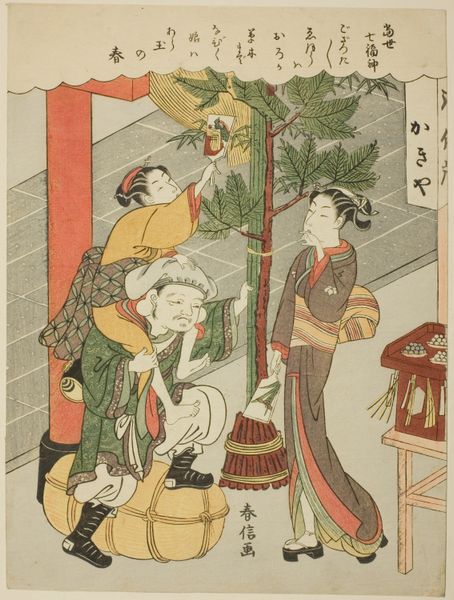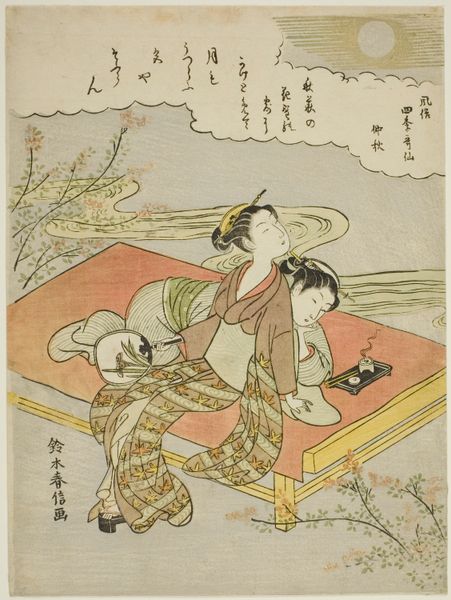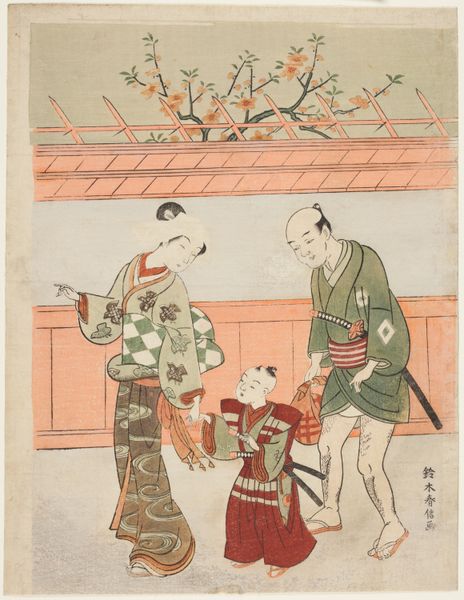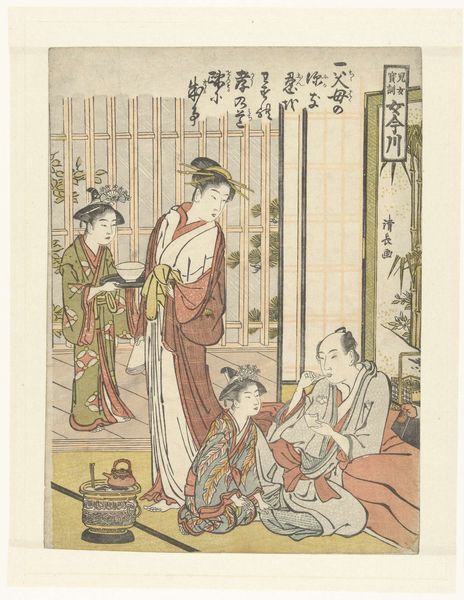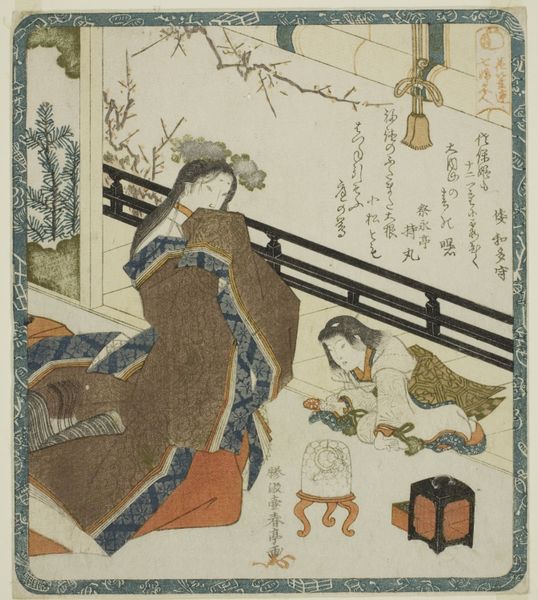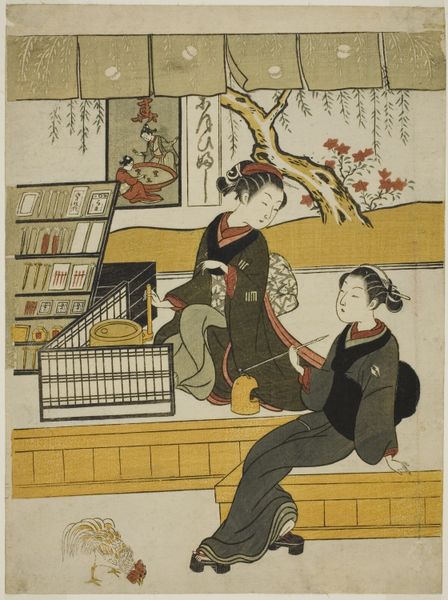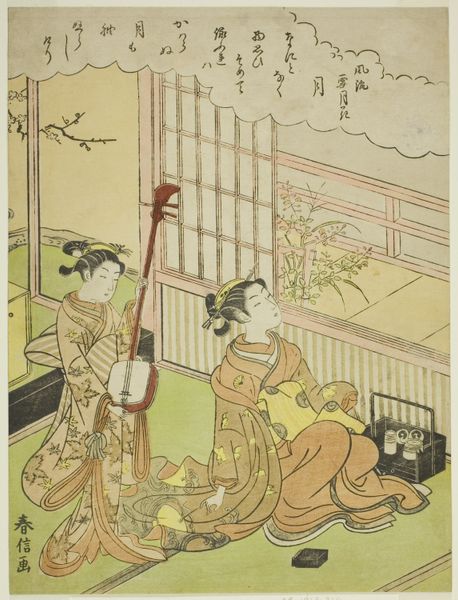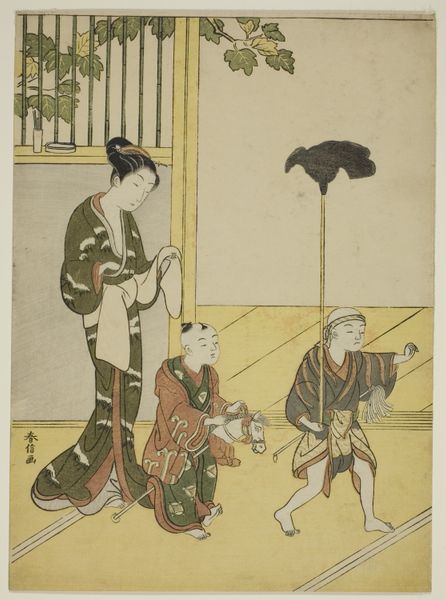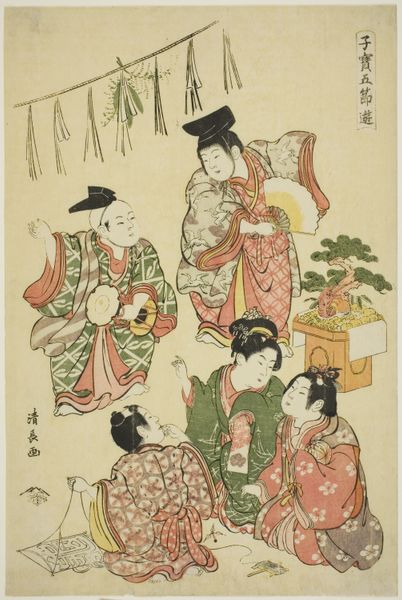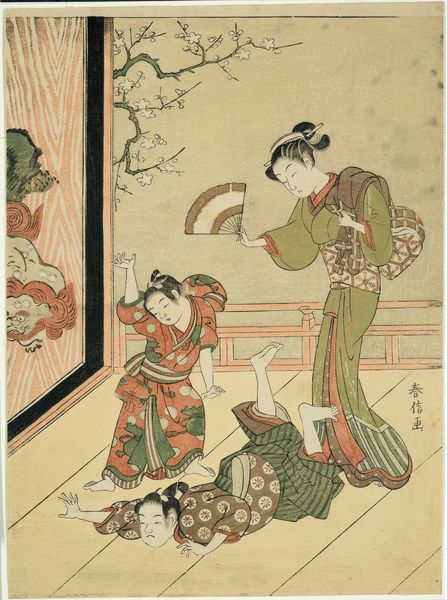
Ebisu, from the series "The Seven Gods of Good Luck in Modern Life (Tosei Shichi Fukujin)" c. 1769
0:00
0:00
# print
#
asian-art
#
ukiyo-e
#
japan
#
figuration
#
history-painting
Dimensions: 11 × 8 in.
Copyright: Public Domain
Curator: Here we have Suzuki Harunobu's print, "Ebisu, from the series 'The Seven Gods of Good Luck in Modern Life'", dating from around 1769. Editor: The composition strikes me immediately – an interior scene, seemingly casual, with a figure carrying what looks like woven bamboo. There's an air of everyday life mingled with something…fanciful? Curator: Exactly! What you're sensing is Harunobu cleverly embedding the god Ebisu within a contemporary, almost genre-like scene. It's from a series exploring the Seven Lucky Gods in modern life, reflecting the shifting social landscape of Edo period Japan. It hints at cultural ideas of good fortune permeating all aspects of existence. Editor: So it's less a straightforward depiction of mythology, and more a reimagining? I’m also noticing how the texture of the print emphasizes the materiality of ordinary items, like the basket or the fabric of the figures' clothing. What were the means for producing this kind of detailed impression? Curator: Harunobu was a pioneer of *nishiki-e*, or "brocade prints", which employed multiple woodblocks—one for each color. The incredible detail comes from meticulous carving and precise registration, signifying significant craftsmanship and an appreciation for accessible art. This level of refined production created broader reach for artists like Harunobu and, thus, the values they were expressing. Editor: The integration of Ebisu, god of fisherman and commerce, into a commonplace setting raises questions about societal shifts and religious syncretism during that period. The presence of Ebisu within what seems like a domestic exchange brings sacred concepts into conversation with the labor involved in producing daily goods. Curator: Absolutely. This interplay invites reflection on the evolving roles of the merchant class and the democratization of spiritual belief during the Edo period, specifically the rise of a merchant class interested in seeing their lifestyles elevated into the spheres of tradition and honor, reflected back at them through prints like these. Editor: A democratization visualized, too, through the craft of printing itself—a material process bringing idealized values into tangible, widespread form. Well, it provides a fascinating lens through which to view artistic creation as both material endeavor and reflection of cultural shifts. Curator: Indeed. Examining works like this helps us understand how cultural identities are negotiated and expressed through the powerful intersection of art, social history, and accessible art making practices.
Comments
No comments
Be the first to comment and join the conversation on the ultimate creative platform.
